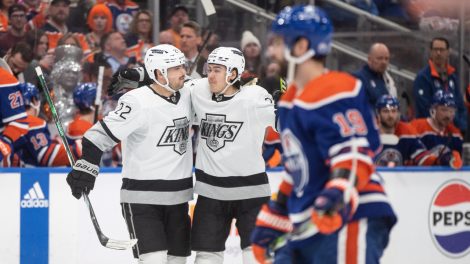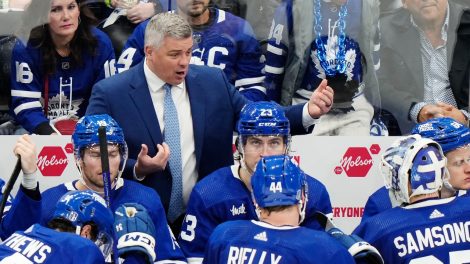It’s hard to find value in free agency, but it isn’t impossible.
Obviously, we won’t know which teams find great value until after the dust settles, but here are some early candidates to provide value on cheap contracts.
Jiri Tlusty
Tlusty, 27, is a really interesting player and there are some good reasons to think he’ll be undervalued. He has played for an unmemorable team for years now, so he’s well outside the media spotlight. He didn’t go for much at the trade deadline and then had a difficult transition after getting dealt to Winnipeg from Carolina.
He’s a really good bet, though. At 209 pounds he’s heavier than average for an NHL forward and he can play on both wings as well as special teams. He can also score. Over the last three years, Tlusty has scored 1.71 points/hour, which is slightly above average for a second-line forward.
He’s a big, versatile, offensive forward available for nothing but money — and probably not much, at that.
Lee Stempniak
A lot of the items that apply to Tlusty also fit Stempniak. Like Tlusty, Stempniak was a cheap deadline pickup by the Winnipeg Jets. Like Tlusty, Stempniak is a versatile forward with a wide range of skills. And like Tlusty, Stempniak is a shockingly effective scorer in recent years; his 1.65 points/hour over the last three seasons is reasonable second-line production, and he actually outperformed that number last year.
The principle thing working against Stempniak is age (he turned 32 in February) and that at 5-foot-11 and 196 pounds, he’s not terribly big. But if the trade deadline is any indication, he’ll be dirt cheap and in a bottom-six role he’s a very good bet to outperform his contract.
Sean Bergenheim
Another cheap trade deadline addition, Bergenheim struggled after joining the Minnesota Wild in a depth role late in the year and that doesn’t bode well for him in free agency. Lots of players take time to adjust after midseason trades though, and his poor end to the season represents an opportunity for NHL general managers.
Bergenheim is a reasonably good scorer at five-on-five; at 1.59 points/hour he’s a lower-end second line winger or a high-end third-liner.
He also excels in terms of advanced stats. When he’s been on the ice the last few years, the Panthers had 56 percent of the scoring chances — that’s an incredible number on a pretty middling team. His shot metrics are brilliant despite starting a lot of shifts in the defensive zone, too.
Brett Bellemore
This is Bellemore’s second year as a UFA, and last time around he had to settle for a one-year, $600,000 contract. It’s weird, because there always seems to be a premium on right-shooting and physical defencemen, and Bellemore fits into both groups.
Bellemore isn’t an exceptional blueliner, but for a team looking for a third-pairing right-shooting guy who can play a bit and hit people, it’s hard to find better value. Adam McQuaid just got a four-year, $11-million contract with an eerily similar skillset. Bellemore will be lucky if he gets seven figures.
Matt Irwin
San Jose’s third-pairing defenceman is a bit of a gamble in that his underlying numbers are only average, but he has some things working in his favour.
Mostly, it’s really difficult to find 6-foot-2, 210-pound defencemen who can skate and pass. Irwin has his issues, but he checks off all of those boxes. That versatility has value, as it makes him easy to pair with anyone — he can line up next to a hard-hitting but limited stay-at-home guy, or he can be the partner to an undersized puck-mover. He can also play both special teams.
Of particular interest, his 0.86 points/hour at even strength over the last three years ranks 50th among NHL defencemen. On any given shift over that span, Irwin was as likely to pick up a point as Slava Voynov, Oliver Ekman-Larsson or Brent Seabrook. He might surprise in a bigger role.
Thomas Greiss
Given the state of the goalie market, all of the available free agents should come at reasonable prices. There simply aren’t starting jobs available for people like Michal Neuvirth, Karri Ramo or Jhonas Enroth, which means it’s going to be very difficult for any of these players to command more than backup money.
Greiss may have trouble doing even that. He’s coming off a one-year, $1-million contract with Pittsburgh, and the Penguins weren’t terribly interested in talking to him about an extension, which doesn’t bode well for his chances on the open market.
Interestingly though, Greiss actually has the best adjusted save percentage of any goalie on this year’s free agent market. He’s a risk because he hasn’t played a lot of games, but he should be an exemplary backup at a small cap hit.










